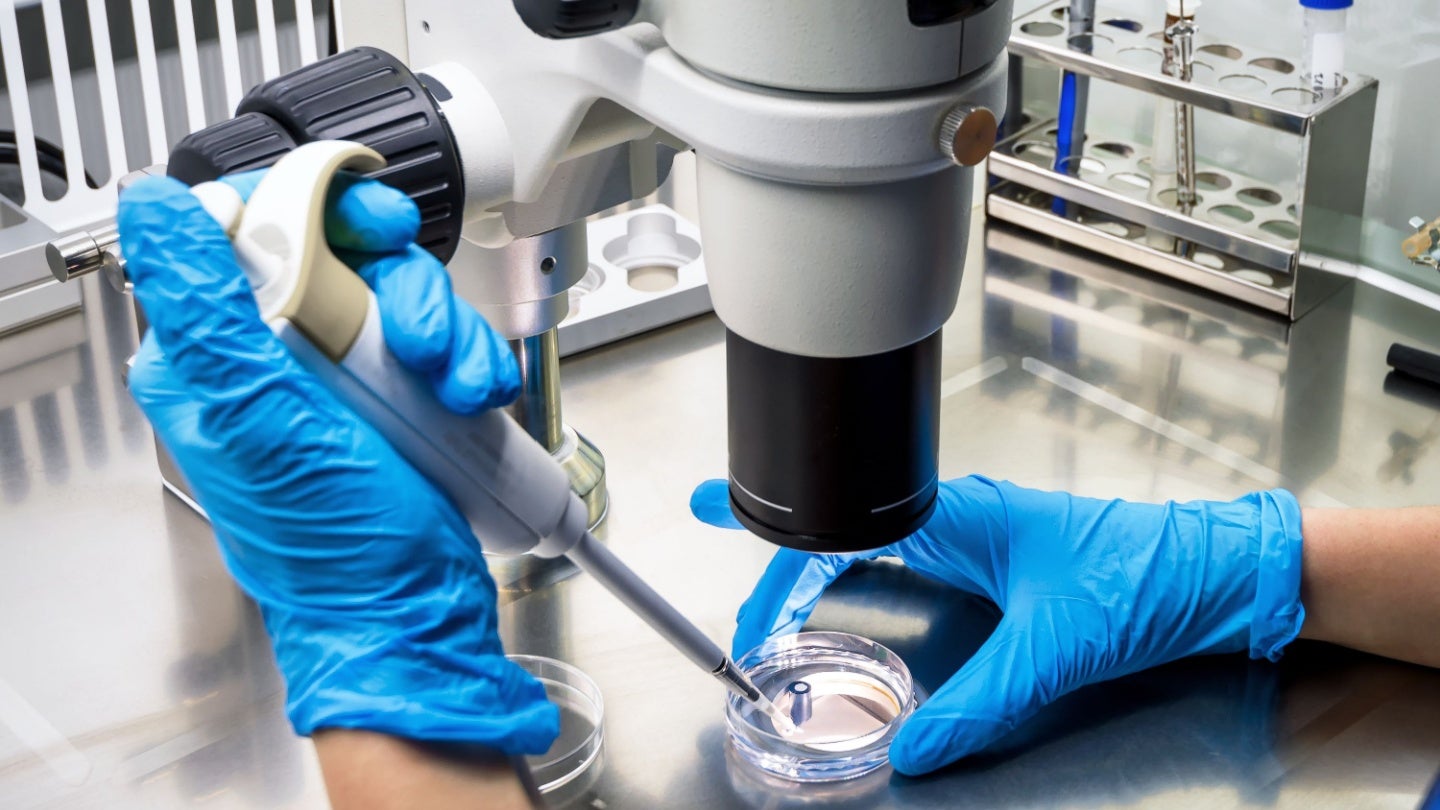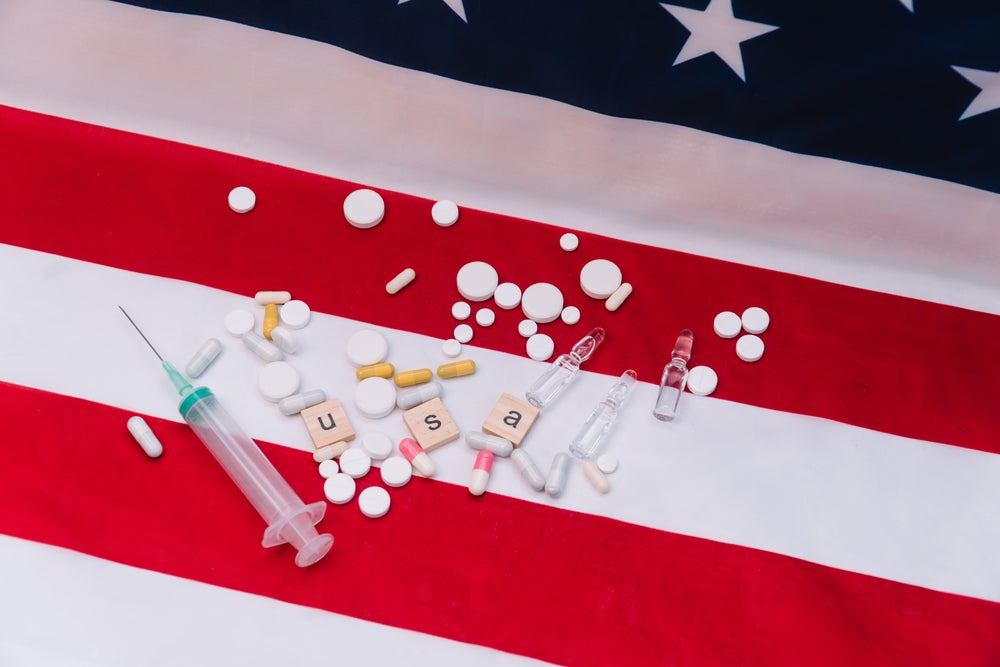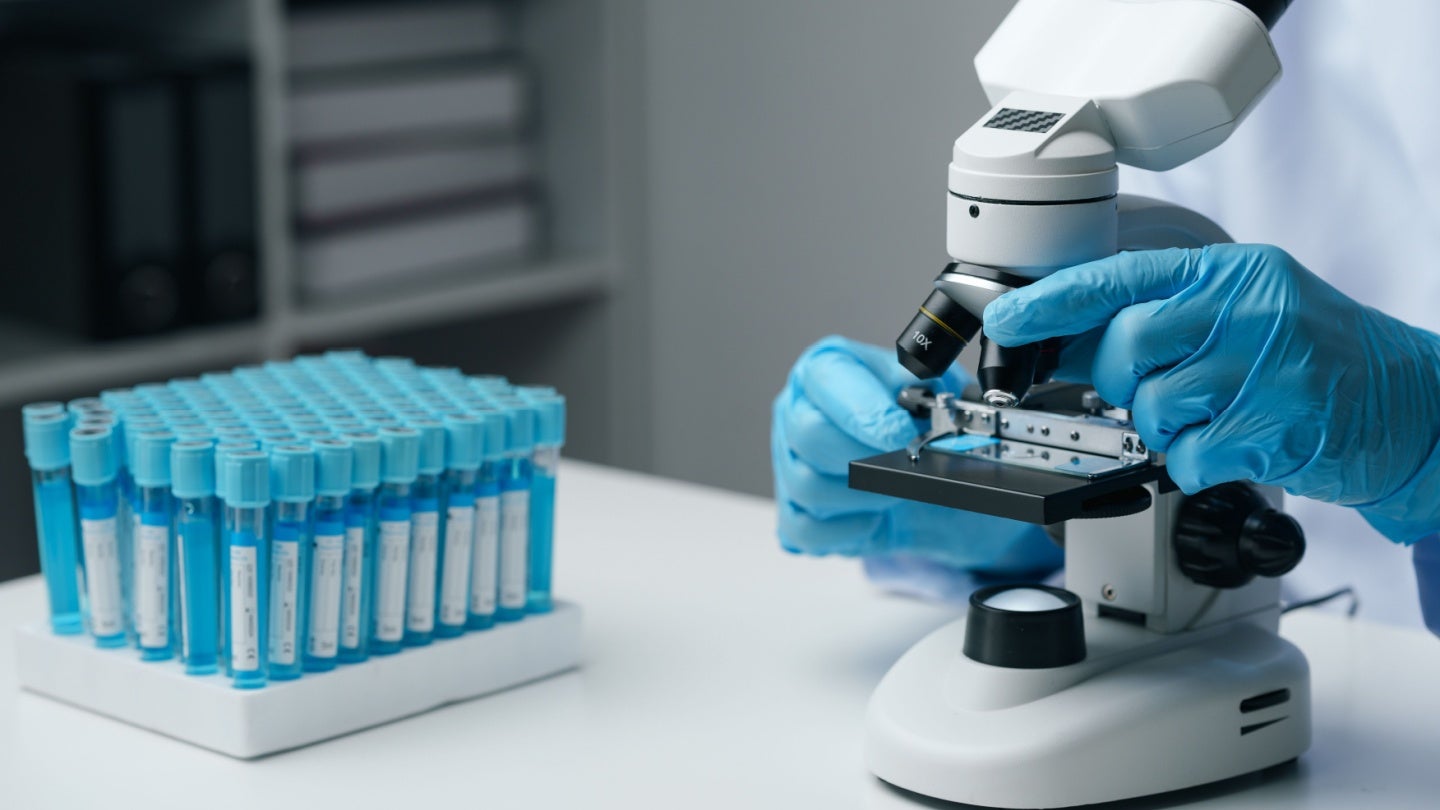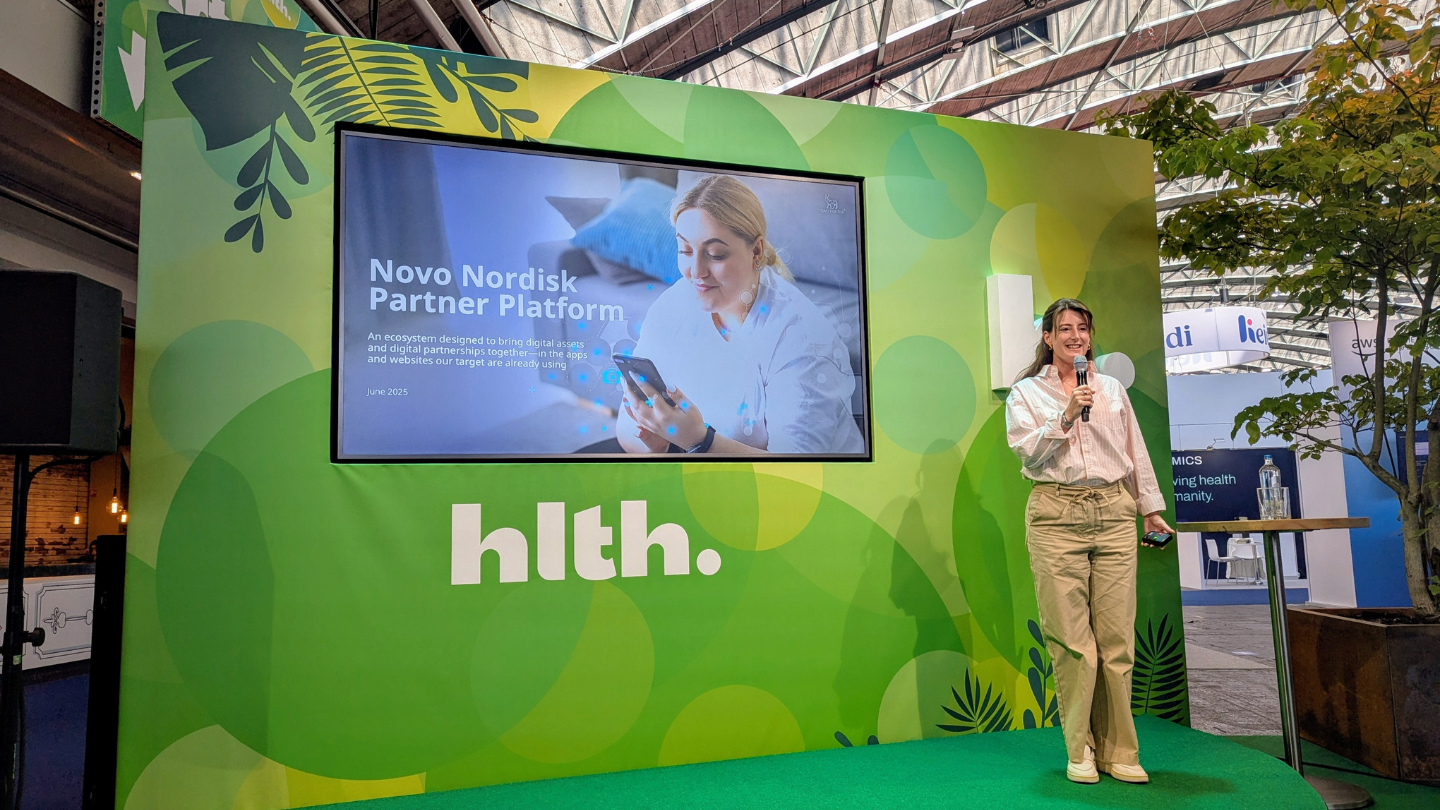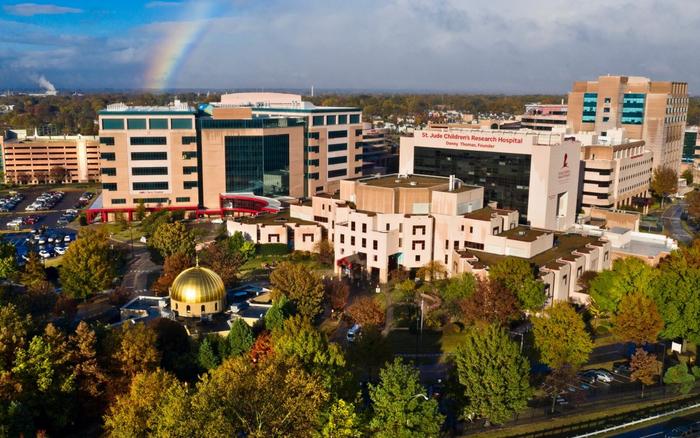Scientists Unveil Lipid Nanoparticle Surface Structures Poised to Enhance Vaccine and Drug Delivery
In a groundbreaking advancement poised to revolutionize the field of drug delivery and vaccine development, scientists at the University of Nottingham’s School of Pharmacy have unveiled a pioneering technique for analyzing the intricate architecture of lipid nanoparticles (LNPs). These microscopic carriers are essential vectors in the delivery of RNA-based therapeutics, including the widely recognized COVID-19 […]


In a groundbreaking advancement poised to revolutionize the field of drug delivery and vaccine development, scientists at the University of Nottingham’s School of Pharmacy have unveiled a pioneering technique for analyzing the intricate architecture of lipid nanoparticles (LNPs). These microscopic carriers are essential vectors in the delivery of RNA-based therapeutics, including the widely recognized COVID-19 vaccines developed by Moderna and Pfizer-BioNTech. By unlocking insights into the molecular orientation and layering within these nanoparticles, the research promises to refine their efficacy and safety, accelerating their transition from laboratory prototypes to clinical realities.
The research team employed an innovative cryogenic mass spectrometry approach known as Cryogenic Orbitrap Secondary Ion Mass Spectrometry (Cryo-OrbiSIMS), an advanced imaging technique capable of profiling frozen lipid nanoparticles in exquisite detail. This approach maintains samples in a near-native hydrated state through high-pressure freezing, allowing the examination of molecular structures without the distortions typically introduced by conventional sample preparation. Such technological sophistication offers a first-ever glimpse into the spatial organization of the lipid components within LNPs, shedding light on how each molecular layer is arranged and oriented.
Lipid nanoparticles have garnered significant attention for their role in delivering RNA therapeutics effectively into cells. The success of mRNA vaccines against COVID-19 propelled LNPs into the spotlight, highlighting their transformative potential in medicine. Beyond vaccines, LNPs are increasingly integral in gene therapies targeting a spectrum of diseases, including hereditary neuropathies and challenging pulmonary conditions such as cystic fibrosis and idiopathic pulmonary fibrosis. However, the complexity of these nanoparticles’ structures and their dynamic behaviors has historically posed hurdles to optimizing performance and ensuring reproducibility in manufacturing.
The Nottingham-led study’s ability to dissect the relative positions of the molecular components within LNPs provides a foundational understanding that could dramatically improve drug formulation strategies. By revealing how lipids, RNA, and other constituents stratify and interact at nanoscale layers, researchers can begin to rationally design nanoparticles with tailored properties—such as enhanced stability, controlled biodistribution, and targeted cellular uptake. This level of molecular precision is critical for tuning LNPs to maximize therapeutic payload delivery while minimizing adverse effects.
Moreover, the implications of this research extend beyond prototype development, addressing a major bottleneck in pharmaceutical scale-up. Quality control during large-scale manufacturing of nanoparticles has been challenging due to limited tools capable of resolving their complex structures in native states. Cryo-OrbiSIMS offers a powerful solution by enabling detailed surface and interfacial analysis that is both sensitive and non-destructive, ensuring consistency and safety in clinical-grade LNP production.
Contributing to this endeavor were collaborators from Sail Biomedicines in Cambridge, Massachusetts, the Massachusetts Institute of Technology (MIT), and the UK’s National Physical Laboratory in Teddington. The multidisciplinary team’s synergy underscores the global importance and collaborative nature of advancing LNP technologies. Particularly, their use of cryogenic sample preservation techniques ensures that biological samples retain hydration and molecular integrity, which are essential for accurate mass spectrometry-based imaging.
Professor Morgan Alexander, who spearheaded the research, emphasized the longstanding challenge in characterizing the delicate surfaces of hydrated pharmaceutical systems. “Our cryogenic molecular surface and interfacial analysis breakthrough transcends previous technical limitations and opens exciting possibilities,” he remarked. With this new capability, the researchers anticipate extending investigations to diverse drug delivery platforms and hydrated biomaterials, potentially transforming multiple facets of biopharmaceutical research.
MIT’s Dr. Robert Langer, an eminent voice in biotechnology, highlighted the practical impact of these findings. He noted that the complex molecular interplay within LNPs governs their effectiveness, yet has been difficult to engineer with precision. This study provides a blueprint for in-depth molecular characterization, empowering scientists and pharmaceutical developers to engineer nanoparticles that consistently deliver therapeutic agents more potently and selectively than ever before.
Similarly, Kerry Benenato, Chief Platform Officer at Sail Biomedicines, underscored the importance of surface characterization in understanding nanoparticle behavior in vivo. “By enabling precise surface characterization, the technology developed by our team lays a foundation for designing LNP-based medicines with tunable properties including biodistribution,” Benenato explained. This prospect not only enhances the versatility of RNA therapies but also expands their applicability across a broad array of diseases, from genetic disorders to complex respiratory conditions.
The application of Cryo-OrbiSIMS technology represents a leap forward in the visualization and understanding of nanoscale pharmaceutical carriers. Unlike traditional analytical methods that often require drying or chemical fixation—processes that can alter or obscure natural structures—cryo-preparation preserves the original hydrated state. This fidelity ensures the captured molecular images are accurate reflections of LNP architecture as it exists in biological environments.
Researchers predict this new analytical platform will facilitate iterative design cycles for next-generation RNA delivery systems, enabling rapid feedback and optimization. This capability is crucial given the immense heterogeneity in lipid nanoparticle formulations, which vary by lipid composition, charge, size, and surface chemistry. By mapping these variables against functional outcomes, scientists aim to systematically decode the structure-function relationships that dictate therapeutic efficacy.
Beyond lipid nanoparticles, the implications of this method extend to other pharmaceutical and biomedical materials where surface and interfacial molecular arrangements determine performance. These could include complex hydrogel drug carriers, protein-based therapeutics, and even cellular biomaterials used in tissue engineering. Thus, this advancement is poised to catalyze innovation not only in nanomedicine but across the life sciences.
As RNA-based therapies continue to expand in scope—targeting everything from infectious diseases to rare genetic conditions and cancers—precise control of delivery vehicles becomes paramount. The Nottingham team’s cryogenic mass spectrometry approach provides an essential toolset to achieve that control, enabling the rational engineering of lipid nanoparticles that are safer, more efficient, and tailored to patient-specific therapeutic needs.
In conclusion, this study marks a monumental step in molecular nanotechnology and drug delivery science. By harnessing cutting-edge cryogenic mass spectrometry techniques, researchers have finally penetrated the complex molecular stratification of lipid nanoparticles with unprecedented detail. The insights gained are set to refine RNA therapeutic delivery on a fundamental level, unlocking new horizons in medicine and enhancing global health outcomes.
Subject of Research: Not applicable
Article Title: Study on molecular orientation and stratification in RNA-lipid nanoparticles by Cryogenic Orbitrap Secondary Ion Mass Spectrometry
News Publication Date: 22-May-2025
Web References:
https://www.nature.com/articles/42004-025-01526-x
http://dx.doi.org/10.1038/s42004-025-01526-x
References:
Communications Chemistry Journal, DOI: 10.1038/s42004-025-01526-x
Image Credits: Not provided
Keywords: Lipid Nanoparticles, RNA Therapeutics, Cryogenic Mass Spectrometry, Cryo-OrbiSIMS, Drug Delivery, Vaccine Technology, Molecular Orientation, Nanomedicine, Freeze Preservation, Biological Nanostructures, Pharmaceutical Scale-Up, RNA Vaccines
Tags: COVID-19 vaccine delivery systemscryogenic mass spectrometry techniquesenhancing vaccine efficacy and safetyhigh-pressure freezing in nanoparticle researchinnovative imaging methods in pharmaceuticalslipid nanoparticles in drug deliverymolecular architecture of lipid nanoparticlesRNA-based therapeutics analysisspatial organization of lipid componentstransitioning lab prototypes to clinical applicationsUniversity of Nottingham research breakthroughsvaccine development advancements
What's Your Reaction?







